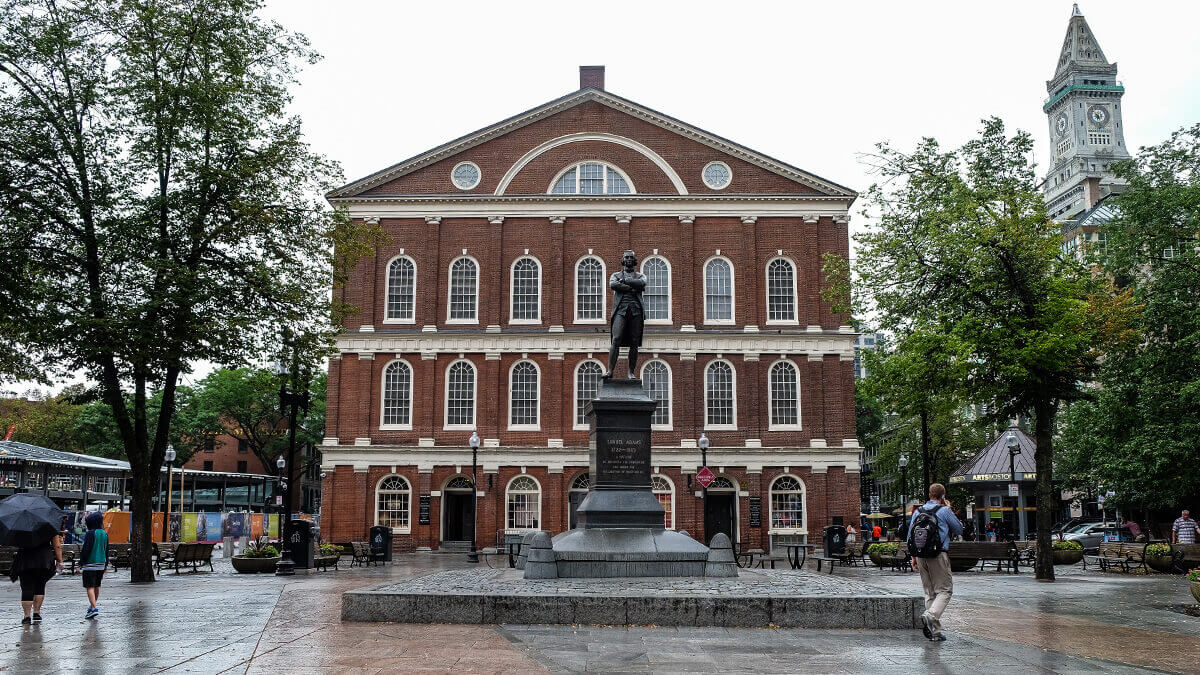A must-see location for anybody visiting Boston, Massachusetts, is Faneuil Hall. It is one of the city’s most well-known attractions. Since it was constructed in 1742, this ancient marketplace has been a hive of activity and is now home to a variety of stores, eateries, and cultural activities. Here is a travel guide to Boston’s Faneuil Hall.
History of Boston’s Faneuil Hall
The Building’s Construction
Peter Faneuil, a prosperous Boston businessman, built Faneuil Hall in 1742. The building cost about $23,000 to construct and was designed by John Smibert. Initially, Boston residents utilized the hall as a marketplace and gathering area.
Role in American History of Boston’s Faneuil Hall
In American history, Faneuil Hall was important, particularly during the Revolutionary War. Patriots who were pushing for independence from Britain utilized it as a meeting place. James Otis delivered a speech in Faneuil Hall in 1764. The speech was critical of the Writs of Help and contributed to the start of the Revolutionary War.
Maintenance and Restoration of Faneuil Hall
Faneuil Hall experienced a decline in the 19th century and was on the verge of being destroyed. Yet in the 20th century, it was restored and remodeled. The most recent restoration being in 1979. The structure is now a recognized National Historic Landmark and is included on the National Register of Historic Places.
Significance of Boston’s Faneuil Hall
Architectural Significance
An outstanding example of Georgian architecture from the 18th century is Faneuil Hall. The structure has a huge entrance hall, a sizable cupola, and a brick facade. It is regarded as one of the most significant specimens of this fashion in the country.
Cultural Relevance
An important part of Boston’s history and a favorite vacation spot is Boston’s Faneuil Hall. It is flanked by other historic sites including the Old State House and the Paul Revere House and is situated in the center of the city’s historic area. The structure serves as a reminder of Boston’s significant historical contributions to American independence.
How To Reach Faneuil Hall
Faneuil Hall is in the center of Boston’s downtown and is simple to reach by public transit. State Street Station, which is served by the Orange and Blue Lines, is the closest subway station. The marketplace is also accessible by taking the Red Line to Park Street or the Green Line to Haymarket, then walking a few blocks.
Things To Do
With everything to see and do, Boston’s Faneuil Hall is a well-liked site for both locals and tourists. These are some noteworthy points
Discover the Marketplace: Faneuil Hall’s marketplace is where you’ll find over 100 stores and eateries. Shoppers can peruse everything from fashion and jewelry to specialty culinary items and mementos. Yankee Candle, Newbury Comics, and Boston Olive Oil Company are a few well-known retailers.
Get a Bite to Eat: Faneuil Hall is also a foodie’s delight, offering a wide variety of cuisines, from traditional New England seafood to cosmopolitan fare. Boston Chowda Co., Quincy Market Colonnade, and Regina Pizzeria are a few places you must see.
Enjoy the Street Entertainment: Faneuil Hall is renowned for its energetic street entertainers, who dazzle crowds with everything from magic shows to live music. Visitors are welcome to enjoy these entertainers’ free performances, which are a beloved component of the lively ambiance of the marketplace.
See the Historic Sites: In addition to various other historic locations, Faneuil Hall is also the location of the original Faneuil Hall structure. In addition to exploring the building and learning about its significance in Boston’s revolutionary past, visitors can also visit adjacent attractions including the Old North Church and the Paul Revere Mansion.
Advice For Visitors
Particularly during the busiest travel season, Boston’s Faneuil Hall can become rather congested. Tourists should plan on waiting in line at popular stores and restaurants and, if at all feasible, go off-peak hours.
Although it is always open, the hours may change depending on the time of year. The official Faneuil Hall website should be consulted by visitors for the most recent details on hours and events.
Visitors should dress appropriately for the weather and be prepared for outdoor shopping at Faneuil Hall. Visitors should wear thick clothing because the market can get rather chilly in the winter.
Boston’s Faneuil Hall is a must-see location for anybody traveling to Boston. It’s no surprise that this marketplace has been a cherished icon for more than 250 years given its vibrant environment, historic sites, and limitless food and retail opportunities.
FAQs
Is Faneuil Hall open to the public?
Indeed, the public is welcome to visit Boston’s Faneuil Hall. Every day of the week, the market is open, and private events can be held in the Great Hall.
Can I visit Faneuil Hall for free?
Yes, there is no admission fee to visit Faneuil Hall.
What types of activities take place at Faneuil Hall?
During the year, Faneuil Hall offers a range of events, including musical performances, theatrical productions, and cultural festivals.
What is the best time to visit Faneuil Hall?
The summer, when outdoor shows and festivities take place in the nearby Quincy Market Colonnade, is the ideal time to visit Faneuil Hall.
Can a wheelchair enter Faneuil Hall?
Yes, Faneuil Hall is wheelchair accessible, and guests can use the elevators to access the building’s higher levels.





+ There are no comments
Add yours